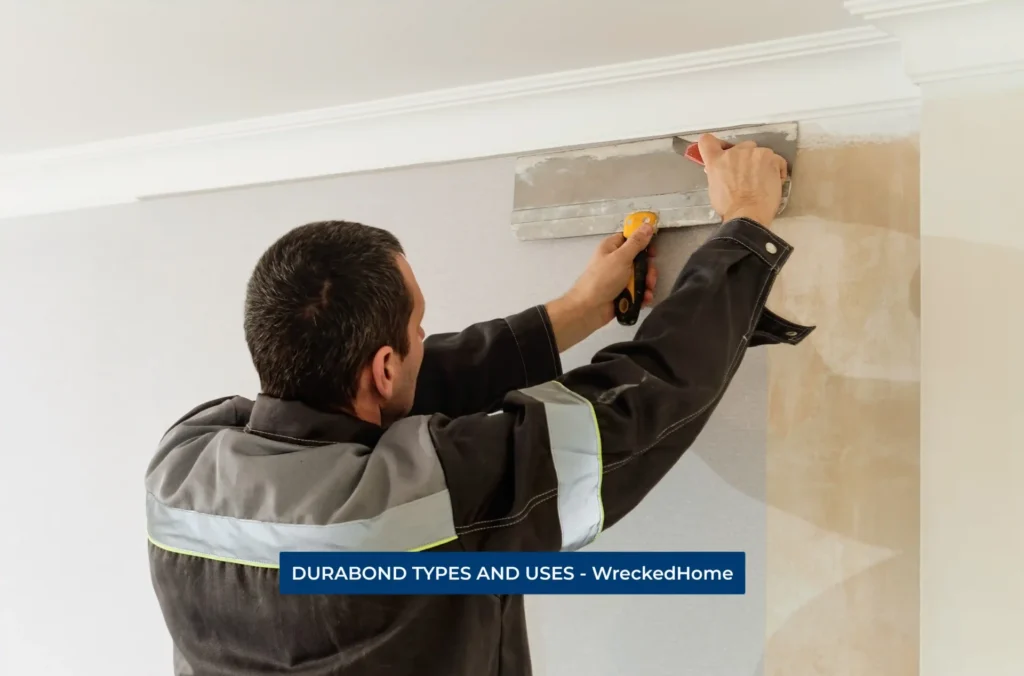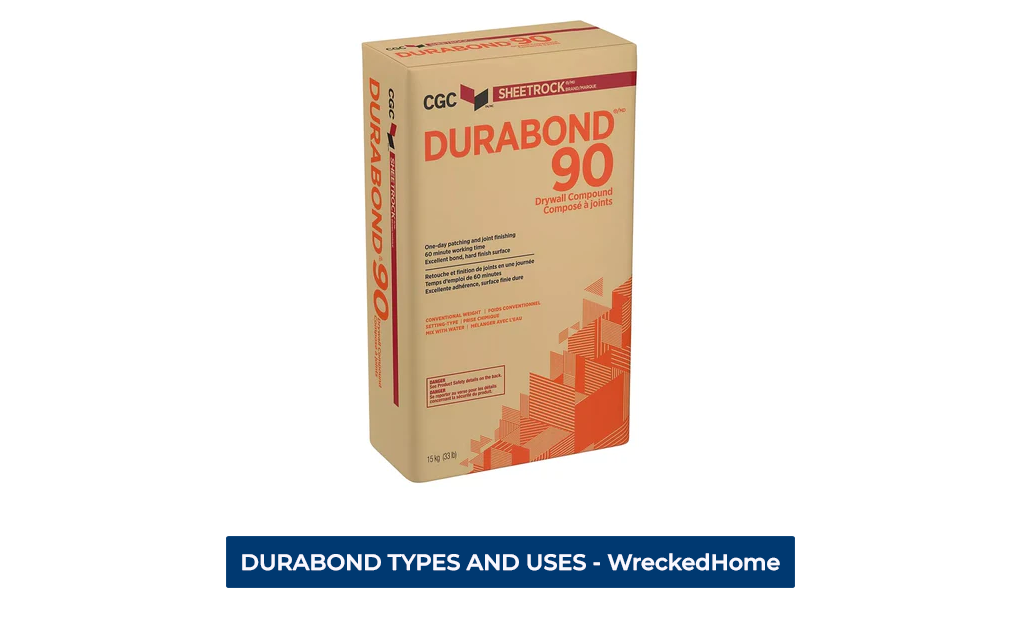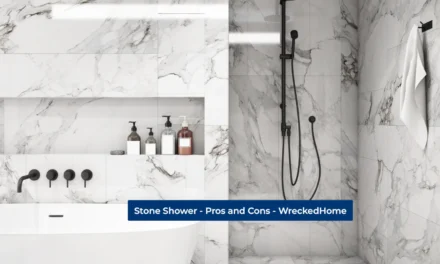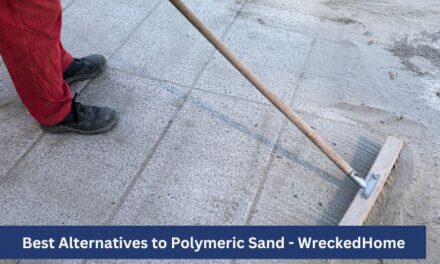Having a sound mind is needed for constructing anything. Similarly; solid, durable and reliable materials are needed for any type of construction. Adhesive materials and sealants are a core requirement when dealing with construction, roofing, flooring, grouting, caulking, home repairs, or DIY projects. Using a quality binding substance will make these structures withstand the test of time. One such substance is Durabond.
Durabond is a construction material that offers a great combination of strength and versatility. It’s used for anything from minor patchwork to building entire structures. Consider using Durabond if you need to repair cracks or reinforce a structure. It is truly all you need!
In this guide, we will teach you all about Durabond. So, let’s discuss its real meaning, explore its product line, and outline its uses.
What Is Durabond?
Durabond is a must-have item needed in the toolkit of builders and DIYers alike. Because it is a joint compound and drywall mud, builders and constructors use it often. This gypsum based powder with water makes a dense and resilient paste. So, its durability separates it from traditional joint compounds.
Different Types

It is not one product, it’s a brand name. It applies to various products across different industries. The different types of Durabond are listed below.
Drywall Joint Compound:
This is a setting joint compound. It is used often in the construction and drywall industry. Its basic purpose is to finish drywall interiors and exterior soffits. In addition to quick-setting, it also provides low shrinkage. Other features include humidity resistance and a superior bond. Once it dries, the surface will be hard like plaster. You can choose from Durabond 45, 90, and 120. Each has a different formulation, drying time, and application purpose. 90 sets faster than 210, thus it is a better choice for a one day drywall finishing job.
Automotive Repair Products:
It is also helpful in automotive repair. Durabond can be used as a body filler and epoxy adhesive. It is most commonly used for repairing vehicle body panels because it gives a durable finish.
Industrial Adhesives:
As an adhesive material, Durabond is strong and durable. Industrialists use it for bonding various materials in manufacturing processes.
Sealants:
Durabond also offers a line of sealants. These sealants are reliable and weather-resistant. Constructors and automotive makers use these sealants for sealing gaps and joints.
Coatings:
Durabond also offers a line of coatings. These are used in the construction industry. Durabond coatings are beneficial because they offer protection against corrosion, wear, and other environmental factors.
Epoxy Resins:
Durabond’s epoxy resins have various uses. These can be used for laminating, casting, or bonding various materials together.
Visit our store for 10% off our Home Maintenance products here.
What Are The Benefits Of Using Durabond?

Here is a quick review of the benefits that Durabond offers you.
- It has a rapid drying time, thus it helps you to finish projects fast.
- it is strong and durable. It will prevent cracks and damage between drywall panels.
- Once it gets dry, you will see minimum shrinkage. So, it maintains a smooth and even surface.
- You can use it to fill larger gaps as it has a thicker consistency.
- To get a secure and durable bond. It is a good source to embed tape for taping and mud processes.
- It comes in different varieties. You can can choose based on your needs.
- To get multi-step drywall finishing, it gets mixed well with other joint compounds.
- After drying, it will allow you to paint it to get a seamless and finished look.
- It has a long-lasting nature. It is good choice to use in high-traffic areas or commercial applications.
- After using it, you don’t need extensive sanding. This saves you time and effort.
- Prices are higher than standard joint compounds. However, it holds your structure firmly and for an extended period of time.
- It has great adhesion power on nearly all surfaces.
- Moreover, it’s moisture resistant feature makes it best choice for use in bathrooms, kitchens, or other high-humidity areas.
- It offers protection against mold and mildew growth.
- It is also helpful to block stains and imperfections on underlying surface. Thus, it offers a smooth and clean finish.
- Furthermore, cracks don’t reappear over time.
- It is easy to mix with water and gives needed consistency for easy handling.
- After properly applying, it produces fewer air bubbles for a smooth finish.
- If you use Durabond, you don’t need to repair it.
- In some cases, It can also improve sound insulation when you use it in conjunction with drywall.
How To Choose The Right Durabond For Your Needs
When it comes to buying one for your project, it’s essential to pick the right one. There are many choices, and you have to be careful while choosing one. Below, you will find the most important features to consider before you buy Durabond.
What’s Your Project Type
What project do you need it for? Do you need to patch small holes or install large scale drywall? Your project scope will determine its type.
Types
There are multiple options to choose from. We have previously discussed types. Please choose according to your need.
Drying Time
Keep the working time drying speed in mind for your next project. All-purpose products dry in about 90 minutes. They have a shorter working time. The heavy-duty products dry in about 24 hours and have a longer working time.
Resist Against Moisture
If you want to use it in a moisture-prone area like a bathroom or kitchen, pick one resistant to moisture. The heavy-duty option is most appropriate. It will prevent your structure from humidity damage.
Durable nature
High-traffic areas have more wear and tear on finished surfaces. A durable product works best because it offers crack resistance.
Read Product Labels:
You can read product labels to choose the correct products. This will explain what types of projects you can use it for.
Ask A Pro
As a new person in this field, you can seek expert help. Tell them about your project and ask for a consultation.
Budget
Its products come in different prices. So, keep in mind your needs and budget before picking a product.
Where Is Durabond Used?
It is not only a strong and durable adhesive/sealant/coating but it is also versatile. It offers plenty of uses in various sectors, ranging from construction and industrial projects to residential and commercial settings. Epoxy is extremely strong and durable. It can be used to repair many things. It can repair metal, concrete, wood, ceramic, glass, and plastics.
Construction
Its adhesive properties and durable nature make it a trusted companion in the construction industry. The uses include:
Concrete Repair And Restoration
It is good to use for repairing and restoring concrete structures. It not only enhances integrity; but it also enhances concrete’s appearance. You can use it for filling or repairing cracks and spalled concrete. It can also be used to patch holes and smooth surfaces.
Masonry Repair And Restoration
Masonry structures sometimes get damaged You can make repairs on brick or stone by using Durabond. Moreover, it maintains masonry’s structural stability and aesthetic appeal.
Structural Reinforcement
It is great for strengthening the structural integrity of buildings. You can use it to anchor or bond various construction elements. It can also increase load-bearing capacity of steel rods, beams, columns, anchors, slabs, and bolts.
Anchoring And Bonding
It is helpful for installing heavy machinery. You can use it for securely anchoring and bonding such components. It can safely anchor screws, bolts and fasteners into masonry.
Industrial
In the industrial sector, you will find the following Durabond uses:
Flooring
It protects industrial floors against wear and tear. You can use it to bond flooring materials. Its resilient nature allows it to withstand against every challenge. It is used for installing and repair concrete floors, polyurethane floors, and epoxy floors.
Roofing
This adhesive is perfect to use on roofs. It can be used on tile roofs, metal roofs, and shingles. It can also be used to install and repair EPDM and TPO roofs. It creates a watertight and durable bond on roofing systems. This is why it is used so often.
Waterproofing
It’s waterproofing importance is indispensible. It forms a protective barrier against water infiltration. This is important for industrial structures and facilities. That’s why most use it for waterproofing masonry and concrete.
Protective Coatings
Corrosion and abrasion are common problems that happen to industrial machinery and equipment. A protective coat is necessary. For such coatings, many use Durabond as a base. It offers a robust foundation and a long-lasting protection on metal and concrete.
Commercial
In commercial settings, there are several ways you can use Durabond. These include:
Grouting
After grouting applications, a sealant is needed for sealing holes and joints between tiles or bricks. It is perfect to use because it offers a tight seal. It also prevents moisture penetration.
Tile And Stone Installation
Tile and stone designs are common in commercial areas. This requires precise and secure installation. An aesthetically pleasing installation of natural stone, ceramic tile, and porcelain tile demands it.
Sealants
Environmental issues like moisture, wind, and pollutants are common in commercial areas. Sealants are essential for protecting and maintaining integrity and appearance. You can use Durabond sealant. It is perfect for sealing concrete, masonry, and other surfaces.
Caulking
You can use it’s caulk for sealing gaps and joints in commercial areas. It waterproofs surfaces and contains thermal insulation properties. Overall, it increases the energy efficiency of construction structures. You can use it as caulk around doors, windows, and other openings.
Residential
When it comes to residential settings, Durabond is helpful in many ways.
Home Repairs
If your home has broken tile, cracks and holes in the roofs then you can use Durabond. It basically helps to repair any part of your home.
DIY Projects
If you love doing DIY’s, then Durabond should be in your toolkit. It is helpful in crafting furniture and home decor. It is also easy to handle. This makes it a good choice for DIYers.
Specific Examples Of Where Durabond Is Used
For your ease, we have given some specific examples. These are helpful for you to understand how the product can be used:
- You can use it to repair cracks in your concrete driveway.
- If there is hole in your brick wall, fill with Durabond.
- Use it for broken tiles in your kitchen
- Use it to install a new metal roof or ceramic tiles in the bathroom
- Waterproof your basement wall with it
- Apply it as a coat on a steel beam
- Use it while fixing a leaky faucet
- If you want to build a wooden birdhouse, use Durabond.
- It is helpful to use while creating mosaic artwork
- You can also use it to make and repair jewelry
How To Apply Durabond
All you need is the product, a taping knife, hawk, and water. You are ready to start and application once you have these supplies.
- Carefully mix Durabond with water. Keep the ratios as instructed by the company.
- Then you can apply a mixture to the drywall joint with a taping knife.
- Apply multiple thin coats over one thick coat for better results.
- Pick hawk to smooth out Durabond.
- Let the Durabond dry before sanding and painting.
Conclusion
Durabond is strong and durable. It can be used in all fields of life. Its easy to handle nature make it a go-to choice for pros and beginners alike. We hope this guide showed you just how useful this product line is.
For any repairs, installations, builds, or questions; We recommend you to hire a professional. Find A Pro Near You Here!





































